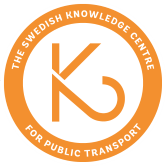Waiting times are important indicators of the degree of travel time optimisation and other behavioural traits among public transport (PT) passengers. As previous studies have shown, the level and usage of pre-trip information regarding schedule or real-time departures are important factors that influence the potential to realise travel time savings by enabling PT passengers to optimise waiting times. Most empirical evidence regarding the revealed PT travel behaviour concerning information levels is based on manual interviews or traditional travel surveys, in which there is a risk that the actual context of where and when the choice of departure time was made is not taken into account. This paper reports the results of a travel survey based on a dedicated smartphone application applied in a field study in a Swedish mid-size urban and regional context. Context-aware notification prompting was used to allow respondents to state their use of pre-trip information as well as whether they had pre-planned their trip and how contingent planning aids were used for time optimisation. The implications on passenger waiting times of the use of information regarding departure times by passengers were emphasised during analyses of the resulting data, along with personal characteristics, in which auxiliary sources such as timetable data and Automatic Vehicle Location were utilised to determine ground truth trip trajectories and trip-contextual factors. The results indicate the significance of having access to pre-trip information, especially for long trips above one hour’s duration, in order to pre-plan and thereby optimise waiting times. In addition, the use and source of pre-trip information differ among age and gender groups. Trip purpose and time of day to some extent determine waiting times and choice of trip optimisation strategy (arrival or departure time).
Effects from usage of pre-trip information and passenger scheduling strategies on waiting times in public transport: an empirical survey based on a dedicated smartphone application
Ulrik Berggren, Karin Brundell-Freij, Helena Svensson & Anders Wretstrand , Public Transport, November 2019
Publication type:
Articles
Research areas:
